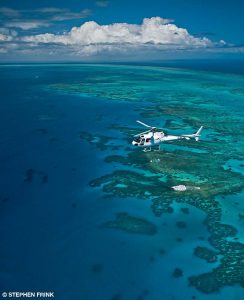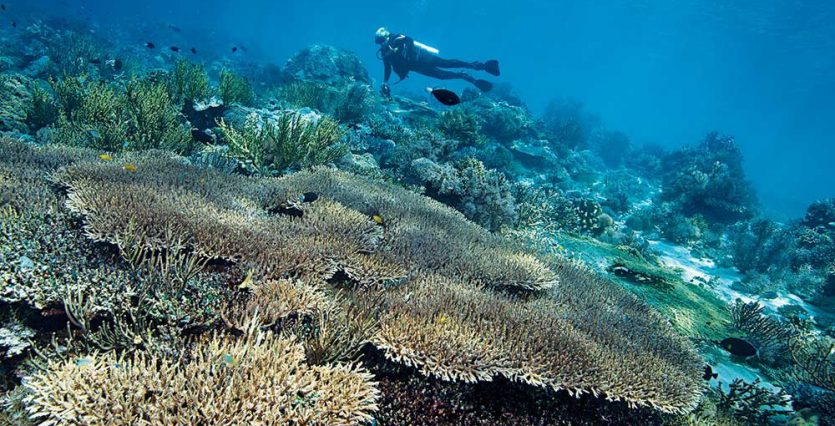 Exotic locations hours from the nearest population are a powerful draw. The prospect of experiencing something that no one else ever has is difficult to refuse, and daydreams of unexplored wrecks and undiscovered ecosystems are hard to ignore. With these thrills come specific challenges and significant risks that can put unprepared travelers in harm’s way. Here’s what you’ll have to contend with before you plan your next remote dream expedition.
Exotic locations hours from the nearest population are a powerful draw. The prospect of experiencing something that no one else ever has is difficult to refuse, and daydreams of unexplored wrecks and undiscovered ecosystems are hard to ignore. With these thrills come specific challenges and significant risks that can put unprepared travelers in harm’s way. Here’s what you’ll have to contend with before you plan your next remote dream expedition.
Time
In well-populated areas, you’re unlikely to spend more than a few minutes with a seriously injured person before professional first responders arrive to stabilize and transport them. In the time it takes to call emergency services and have an ambulance dispatched, a patient can be in the hands of expert healthcare providers and out of your care. In the most remote environments, however, your traveling companions may be all you have. If you or a dive buddy becomes ill or injured and the nearest help is a day’s travel away, you may find yourself forced to provide care to the best of your ability until more qualified care can be reached.
This means that even minor wounds must be cleaned thoroughly to prevent infection, and you may need to source or construct splints, wraps or slings to limit further injury to bones or muscles. You may be required to administer medications as well, and careful notes of dosage and administration time should be kept for health care providers when they can be reached.
When providing care over an extended period, the burden of care is significantly greater than just stabilizing a patient and attending to their wounds. Caregivers must find ways to help injured companions stay nourished, hydrated, warm and able to relieve themselves. It isn’t just training, planning and sound judgment that are helpful in these extended-care situations; good bedside manner and a willingness to provide comfort and encouragement are important as well.
Shelter
Hospitals, clinics, and ambulances offer climate control, shelter, light and other amenities that can be hard to find in field camps and wilderness settings. Be prepared to care for injured traveling companions in the dark and while susceptible to weather, or to find portable shelter solutions. You may face rain and high winds, the sun’s relentless rays, lethargy-inducing heat or finger-numbing cold as you administer aid, dependent on your location. Extreme weather makes injuries more likely, and thus you are more likely to have to provide care while dealing with the weather that contributed to the injury. Evacuation to a higher level of medical care will not be necessary for every minor injury, but simple trips to a doctor for infections and other seemingly mundane problems can easily become daylong ordeals.
Medical Equipment
When an ambulance arrives at the scene of an accident, it comes loaded with equipment designed to relieve the sick or injured. When no ambulance is available, you’re forced to rely only on what you’ve managed to bring with you or sourced locally. This means you’ll have to spend a significant amount of time deciding what equipment to bring on a trip and speculating on the most likely emergency scenarios if you want to improve the chance that you’ll be equipped to deal with an emergency while managing the weight of your luggage. By the same token, it means that you may also need to improvise important equipment that you did not, or could not, bring with you — effective improvisation is an essential skill in wilderness medicine.
Whether you need to improvise a splint with sticks and T-shirts, make a stretcher to transport a patient to an airstrip, or fashion any number of bandages, slings and compression devices with repurposed clothing, creativity and willingness to try novel approaches can make a huge difference in an emergency.
Emergency Preparedness
 The balance between having enough equipment and either too much to travel with or too little to prepare for emergencies can be difficult. Necessities like first-aid kits and emergency oxygen are a given for divers, but things like a headlamp to help treat an injured dive buddy at night often go overlooked. Extra water, sunscreen, and insect repellent will be appreciated by all if the group is forced to stop in an exposed area because of injury or illness. A spare insulating layer and exposure protection, like wide-brimmed hats and rain jackets, can make an enormous difference in the comfort of an injured person in the field, and a simple notebook and pen can make an incredibly valuable log of patient condition for health care providers.
The balance between having enough equipment and either too much to travel with or too little to prepare for emergencies can be difficult. Necessities like first-aid kits and emergency oxygen are a given for divers, but things like a headlamp to help treat an injured dive buddy at night often go overlooked. Extra water, sunscreen, and insect repellent will be appreciated by all if the group is forced to stop in an exposed area because of injury or illness. A spare insulating layer and exposure protection, like wide-brimmed hats and rain jackets, can make an enormous difference in the comfort of an injured person in the field, and a simple notebook and pen can make an incredibly valuable log of patient condition for health care providers.
Before you travel to a remote area, carefully research the injuries you’re most likely to face, the vaccinations and political precautions you may need, and take full advantage of resources like the local U.S. Embassy, the World Health Organization, and the U.S. State Department.
For more information on travel safety, visit DAN.org or call 1-919-684-2948.


